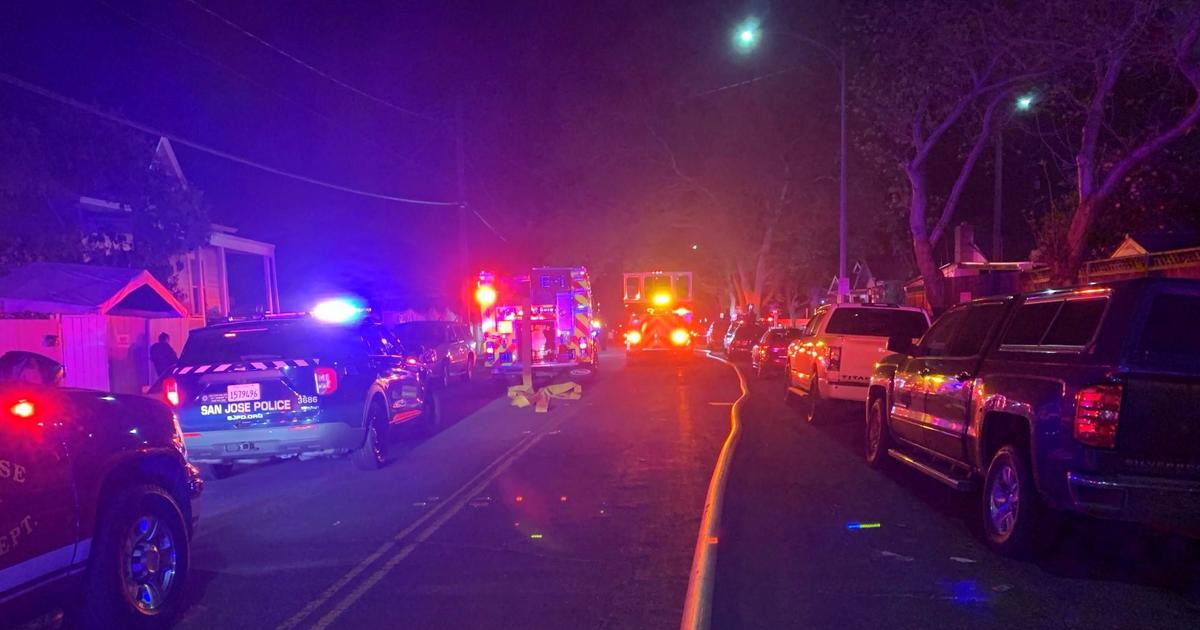COVID Recovery: California Restaurants Expect Rebound To Take Years
SACRAMENTO (AP) — Nearly a third of California's restaurants permanently closed and two-thirds of workers at least temporarily lost their jobs as the pandemic set in more than a year ago and Gov. Gavin Newsom imposed the nation's first statewide lockdown, a legislative committee reported Tuesday.
Few business sectors were more battered than the dining industry, which before the pandemic included more than 76,000 eating and drinking establishments employing 1.8 million people, according to the California Restaurant Association.
But with the shutdown, as many as a million of those workers were quickly furloughed or laid off, the association told the state Senate's Special Committee on Pandemic Emergency Response.
"COVID-19 has upended all of our lives, but its impacts have been felt more acutely in the restaurant industry,″ said Democratic state Sen. Josh Newman, who heads the committee and led the hearing on the issue. "It is clear that recovery will take time."
Restaurant employment is still down one-quarter from before the pandemic, according to the latest numbers from the state Employment Development Department.
Industry leaders said they fear a lack of labor may shutter more establishments as the economy reopens.
The state initially closed nonessential businesses, though it allowed food-serving establishments to continue offering takeout meals. Its color-coded tier system for reopening the economy later allowed restaurants to offer outdoor seating or indoor dining at various levels of capacity as coronavirus cases eased.
With infections dwindling, vaccinations increasing and a positivity rate below 1%, officials say California is on track to lift most remaining restrictions on June 15.
Yet many restaurants are struggling to serve the customers already allowed under current capacity limits because of a lack of staff, the committee said.
Potential employees may be able to make ends meet with unemployment and federal stimulus benefits instead of going back to work, it said in its report. Some may fear for their safety during the pandemic, while others may want "more stable career paths" after being repeatedly furloughed.
"Right now we're just at the beginning of feeling this crunch," said California Restaurant Association senior vice president for government affairs and public policy Matthew Sutton. Without providing specifics, he said lawmakers might want to use part of the state's massive budget surplus to create an incentive program for employees to return to work.
The industry is expected to eventually rebound, the restaurant association reported, creating another 160,000 jobs by 2029, for a total of nearly 2 million statewide.
"We look forward to building back to that, but it's going to take several years," Sutton said. In the meantime, he said restaurants have to recover from the loss of revenue while their fixed costs like rent and insurance continued.
Health officials' abrupt shutdown orders gave restaurant owners no time to ramp down employment or distribute food, beverages and other supplies they had just acquired, Sutton and other witnesses said at the hearing.
"Closing restaurants literally reverberates right back to the soil," he said, affecting a broad swath of the economy including food providers. Many establishments weren't designed around a take-out model, yet most tried to adapt anyway "to keep their doors open to some degree" and keep some employees working.
In hindsight, the state lacked evidence to back up its decision to close outdoor dining and that rationale "was not effectively communicated," said Marin County Public Health Officer Dr. Matt Willis.
"Even in the absence of specific knowledge...I think that's an area where we could have done better," Willis said, though he said the evidence of virus transmissions during indoor dining was much more clear.
With no time to collect data on the risk of transmissions from open air contact, health officials had to use their best judgment at the time but now understand that the risk of outdoor transmission is low, said Willis and California Conference of Directors of Environmental Health executive director Justin Malan.
"We may not have had all the right answers ... but remember, this was a novel coronavirus," said Malan. "We didn't have a blueprint on how to respond to this."
Restaurants said they adapted to a new business model on the fly during the pandemic, with help from the state Department of Alcoholic Beverage Control that also was charged with inspecting establishments to make sure they were following pandemic rules.
They could offer curbside deliveries or free deliveries off-site, expand into outdoor areas like patios, sidewalks, parking lots or closed-off streets with local approval, and sell alcoholic beverages to be consumed off-site or with take-out food. The state waived license renewal fees for two years for eligible businesses.
Aside from safety measures like masks, increased sanitation, employee health screenings and physical distancing, restaurants adopted disposable menus or ones customers could view on their smartphones and switched to providing silverware pre-rolled in napkins.
Improvements restaurants made to their indoor airflow and filtering will remain long-term, Sutton said, and restaurants also want to be able to maintain their expanded outdoor dining options.
© Copyright 2021 The Associated Press. All Rights Reserved. This material may not be published, broadcast, rewritten or redistributed.



